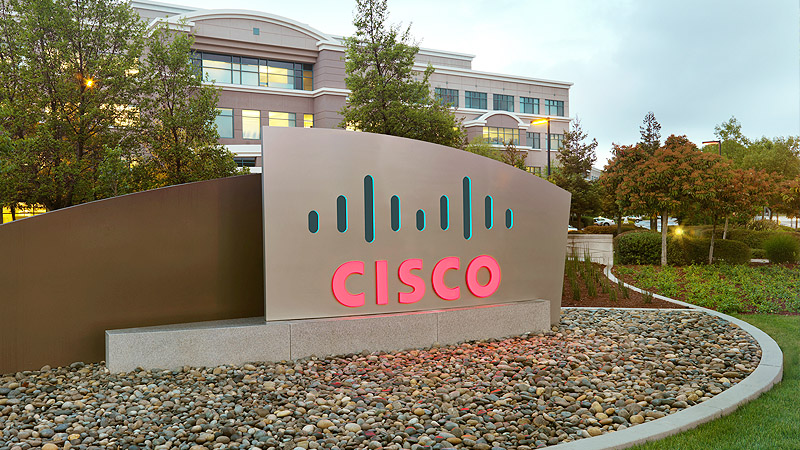SAN JOSE, Calif. – Feb. 5, 2013 – According to the Cisco® Visual Networking Index Global Mobile Data Traffic Forecast for 2012 to 2017, worldwide mobile data traffic will increase 13-fold over the next four years, reaching 11.2 exabytes* per month (for an annual run rate of 134 exabytes) by 2017. The expected steady increase in mobile traffic is partly due to continued strong growth in the number of mobile Internet connections (personal devices and machine-to-machine applications), which will exceed the world’s population (United Nations estimates 7.6 billion) by 2017.
*An exabyte is a unit of information or computer storage equal to one quintillion bytes.
The forecast’s annual run rate of 134 exabytes of mobile data traffic is equivalent to:
- 134 times all the Internet Protocol traffic (fixed and mobile) generated in the year 2000, or
- 30 trillion images (e.g., via MMS or Instagram) — 10 images daily from each person on earth for one year, or
- 3 trillion video clips (e.g., YouTube) — one video clip daily from each person on earth over one year.
The projected 2012 to 2017 global mobile data traffic increase represents a compound annual growth rate of 66 percent. The incremental amount of traffic being added to the mobile Internet just between 2016 and 2017 is 3.7 exabytes per month, which is more than four times the estimated size of the entire mobile Internet in 2012 (885 petabytes per month).
During the 2012 to 2017 forecast period, Cisco anticipates that global mobile data traffic will outpace global fixed data traffic by a factor of three. The following major trends are driving global mobile data traffic growth:
- More mobile users: By 2017, there will be 5.2 billion mobile users (up from 4.3 billion in 2012).
- More mobile connections: By 2017, there will be more than 10 billion mobile devices/connections, including more than 1.7 billion M2M connections (up from 7 billion total mobile devices and M2M connections in 2012).
- Faster mobile speeds: Average global mobile network speeds will increase seven-fold from 2012 (0.5 Mbps) to 2017 (3.9 Mbps).
- More mobile video: By 2017, mobile video will represent 66 percent of global mobile data traffic (up from 51 percent in 2012).
Impact of Mobile Devices/Connections
- Smartphones, laptops, and tablets will drive 93 percent of global mobile data traffic by 2017.
- M2M traffic (such as GPS systems in cars, asset tracking systems, medical applications, etc.) will represent 5 percent of 2017 global mobile data traffic.
- Basic handsets will account for the remaining 2 percent of global mobile data traffic in 2017.
- In 2012, 14 percent of all mobile-connected devices/connections (1 billion) were IPv6-capable.
- By 2017, 41 percent of all mobile-connected devices/connections (4.2 billion) will be IPv6-capable.
Traffic Offload from Mobile Networks to Fixed Networks
To address the rise in demand for mobile Internet, and to address the lack of available new mobile spectrum and the expense and complexity of adding new macrocell sites, service providers are increasingly looking to offload traffic to fixed or Wi-Fi networks.
- In 2012, 33 percent of total mobile data traffic was offloaded (428 petabytes/month).
- By 2017, 46 percent of total mobile data traffic will be offloaded (9.6 exabytes/month).
Key Regional Growth Projections
In terms of mobile data traffic growth rates over the forecast period, the Middle East and Africa region is projected to have the highest regional growth rate. Below is how each of the regions ranks in terms of growth rate by 2017:
- The Middle East and Africa: 77 percent CAGR (17.3-fold growth)
- Asia-Pacific: 76 percent CAGR (16.9-fold growth)
- Latin America: 67 percent CAGR (13.2-fold growth)
- Central and Eastern Europe: 66 percent CAGR (12.8-fold growth)
- North America: 56 percent CAGR (9.4-fold growth)
- Western Europe: 50 percent CAGR (7.6-fold growth)
In terms of mobile data traffic generation, the Asia-Pacific region is projected to generate the most mobile data traffic. Here’s how each of the regions rank in terms of anticipated mobile data traffic generation by 2017:
- Asia-Pacific: 5.3 exabytes/month
- North America: 2.1 exabytes/month
- Western Europe: 1.4 exabytes/month
- The Middle East and Africa: 0.9 exabytes/month
- Central and Eastern Europe: 0.8 exabytes/month
- Latin America: 0.7 exabytes/month
Impact of Faster Global Mobile Network Connection Speeds
The average mobile connection is expected to increase seven-fold from 2012 to 2017. Mobile connection speeds are a key factor in supporting mobile data traffic growth.
| (kbps) |
2012 |
2013 |
2014 |
2015 |
2016 |
2017 |
CAGR |
| Average Mobile Connection Speed |
526 |
817 |
1,233 |
1,857 |
2,725 |
3,898 |
49 percent |
| Average Smartphone Connection Speed |
2,064 |
2,664 |
3,358 |
4,263 |
5,284 |
6,528 |
26 percent |
Source: Results from Cisco Global Internet Speed Test (GIST), part of the Cisco VNI program, and other independent speed test findings. The Cisco GIST application has more than 1 million global users. These projections include cellular connection speeds only (not Wi-Fi) and are based on extrapolations from historical mobile network connection speed data.
4G Adoption and Mobile Data Traffic Growth
Many global mobile carriers are deploying 4G technologies to address consumer and business users’ demands for wireless services. In many emerging markets, carriers are creating new mobile networks with 4G solutions. In mature markets, carriers are supplementing or replacing legacy (2G/3G) networks with 4G technologies. The Cisco Mobile VNI study now projects the growth and impact of 4G.
- In 2012, 2G supported 76 percent of global mobile devices/M2M connections; 3G supported 23 percent; and 4G supported 1 percent.
- By 2017, 2G networks will support 33 percent of global mobile devices/M2M connections; 3G networks will support 57 percent; and 4G networks will support 10 percent.
- In 2012, 4G connections accounted for 14 percent (124 petabytes/month) of mobile data traffic.
- By 2017, 4G connections will account for 45 percent (5 exabytes/month) of mobile data traffic.
- In 2012, the average 4G connection generated 2.1 gigabytes of mobile data traffic per month, which is 19 times the 0.110 gigabytes/month for the average non-4G connection.
- By 2017, 4G traffic will grow 40-fold, a 109 percent CAGR.
Cisco Mobile VNI Forecast Methodology
The Cisco Mobile VNI study relies upon independent analyst forecasts and real-world mobile data usage studies. Upon this foundation are layered Cisco’s own estimates for mobile application adoption, minutes of use, and transmission speeds. Key enablers such as mobile broadband speed and device computing power are also factored into Cisco VNI projections and findings. A detailed methodology description is included in the complete report (see link below).
Supporting Quote
- Doug Webster, Vice President of Service Provider Networking Marketing, Cisco
“By 2017, global mobile data traffic will continue its truly remarkable growth, increasing 13-fold over the next five years, to reach an amount more than 46 times the total amount of mobile IP traffic just a few years ago in 2010. With such dramatic adoption, we are rapidly approaching the time when nearly every network experience will be a mobile one and, more often than not, a visual one as well. This trend is a result of the seemingly insatiable demand by consumers and businesses alike to achieve the benefits gained when connecting people, data, and things in an Internet of Everything.”
Additional Supporting Resources
- Cisco Visual Networking Index home page
- Cisco Visual Networking Index Mobile Data Traffic blog post
- Cisco VNI Mobile Infographic: FaceTime Study
- To access b-roll, visit: Cisco’s Online Press Room and follow username and password instructions (Folder Name: PR; File Name: Cisco Visual Networking Index Global Mobile Data Traffic Forecast, February 2013).
- Read the complete Cisco Visual Networking Index Mobile Data Traffic Forecast and Methodology, 2012-2017 white paper
- Cisco Visual Networking Index Mobile Data Traffic Forecast, 2012-2017 FAQs
- Learn more about the free Cisco Global Internet Speed Test (GIST) application
- See the latest Cisco GIST results worldwide: http://gistdata.ciscovni.com/
- For more information about Cisco’s service provider news and activities visit the SP360 Blog or follow us on Twitter @SP360 or SP360 SlideShare
- Subscribe to Cisco’s SP360 feed
Editor’s Note
Cisco invites press, analysts and bloggers to attend a live webcast featuring Cisco executives and a roundtable of information technology and service provider industry experts talking about the global impact of mobile data traffic growth for service providers, organizations and consumers. The live webcast begins at 6p.m. PST today and can be accessed by going to Cisco VNI Global Mobile Data Traffic Forecast Update (2012-2017).
Cisco also welcomes press, analysts, bloggers, service providers, regulators and other interested parties to use and reference our research with proper attribution, such as “Source: Cisco Visual Networking Index Global Mobile Data Traffic Forecast Update, 2012-2017.”
Tags/Keywords
Cisco, Service Provider, Visual Networking Index, VNI, Mobile Internet, Mobile Data, Mobile Video, Mobile VNI, Doug Webster
RSS Feed for Cisco: http://newsroom.cisco.com/dlls/rss.html
About Cisco
Cisco (NASDAQ: CSCO) is the worldwide leader in IT that helps companies seize the opportunities of tomorrow by proving that amazing things can happen when you connect the previously unconnected. For ongoing news, please go to http://thenetwork.cisco.com.
# # #
Cisco and the Cisco logo are trademarks or registered trademarks of Cisco and/or its affiliates in the U.S. and other countries. A listing of Cisco's trademarks can be found at www.cisco.com/go/trademarks. Third-party trademarks mentioned are the property of their respective owners. The use of the word partner does not imply a partnership relationship between Cisco and any other company.






